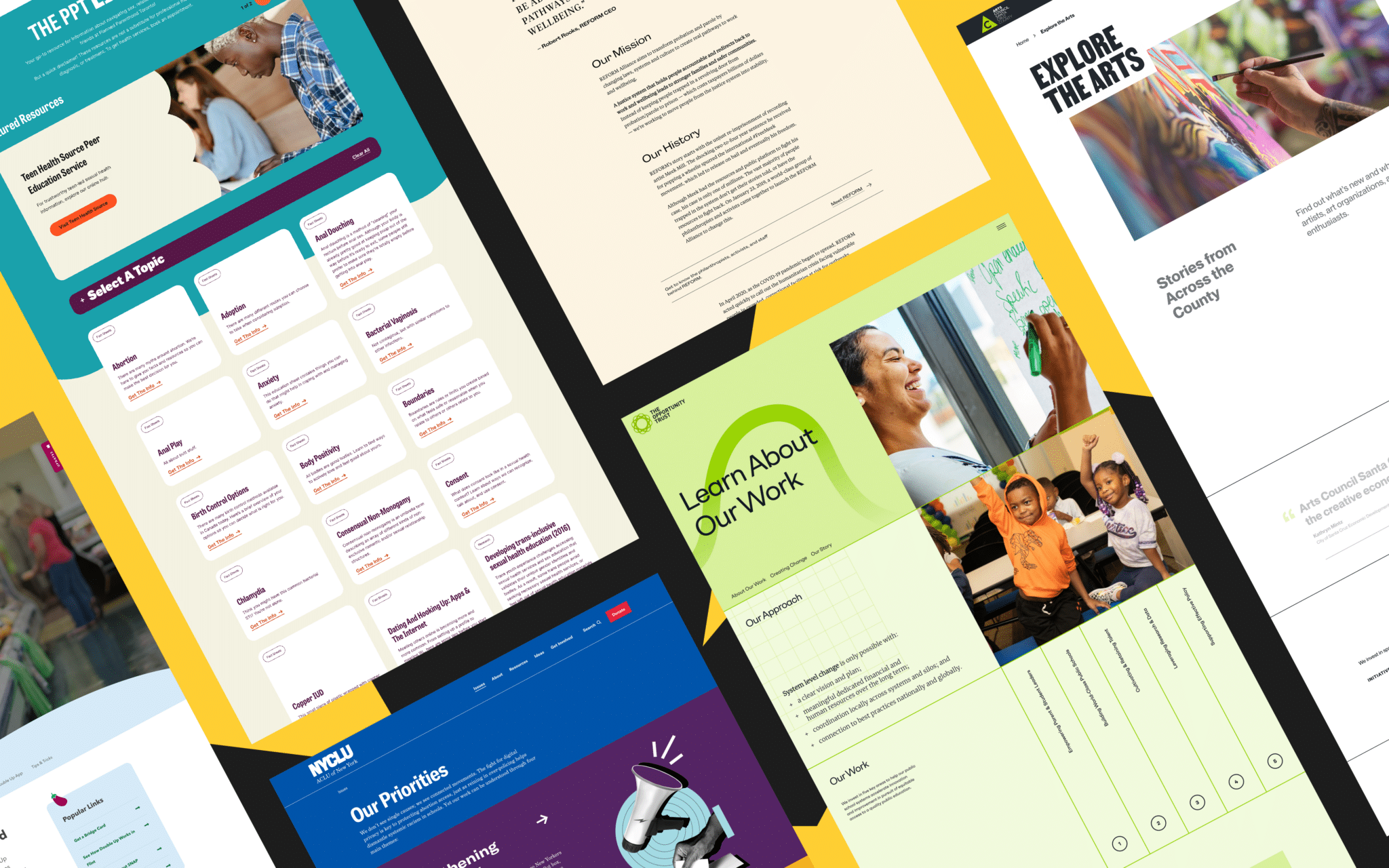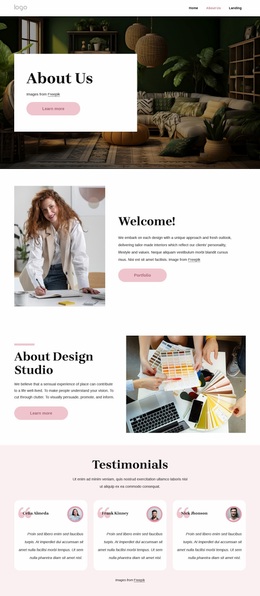Why Responsive Website Design is Essential for Today's Digital Market
Why Responsive Website Design is Essential for Today's Digital Market
Blog Article
The Ultimate Guide to Modern Web Site Layout Trends
In the ever-evolving electronic landscape, modern website style fads play a critical duty fit customer experience and engagement. From the increase of minimal layout principles that prioritize simplicity to the impact of bold typography in specifying brand name identity, each component adds to a natural online existence. The focus on mobile-first and responsive approaches, along with innovative microinteractions, better enhances use. The growing focus on sustainable web design methods mirrors a commitment to ecological obligation. These trends collectively increase vital inquiries regarding the future of reliable internet style and what it means for businesses and customers alike.
Minimalist Layout Principles
Minimalist style concepts stress the idea that much less is more, advocating for simpleness and performance in aesthetic interaction. This strategy strips away unneeded elements, focusing rather on essential components that convey the desired message successfully. By prioritizing clearness, minimalist design enhances user experience, permitting site visitors to browse internet sites easily.
Core tenets of minimal design include making use of sufficient white space, which creates a sense of balance and organization. This negative room not just routes the audience's interest to crucial elements yet likewise promotes a calming aesthetic atmosphere. In addition, a minimal color scheme is usually used, utilizing monochromatic plans or soft colors to maintain aesthetic communication and stop overwhelming the user.
Typography plays a critical role in minimal style, where legible font styles are picked for their simplicity and performance in communicating material. Graphics and photos are utilized moderately, making certain that they offer an objective rather than distract from the total message. Ultimately, minimalist layout concepts grow a focused setting that motivates individuals to involve with the content, boosting the overall effectiveness of modern-day web site layout. This pattern reflects a growing appreciation for thoughtful, user-centric visual appeals in digital areas.
Strong Typography Choices
Embracing vibrant typography choices has come to be a defining quality of modern internet site layout, as it properly captures focus and shares solid messaging. Developers are progressively making use of typography not just as a functional aspect however as an essential visual component that enhances the total aesthetic and customer experience.

Furthermore, the association of vibrant typography with minimalist layout concepts enables striking contrasts, improving readability while maintaining visual appeal. The usage of whitespace around bold message even more emphasizes its relevance, guaranteeing that the message reverberates with the target market.
As electronic landscapes end up being a lot more competitive, leveraging vibrant typography enables brand names to separate themselves and leave a long-term impression. The cautious selection of typefaces and their application can evoke feelings, develop tone, and drive activity, making strong typography an important tool in contemporary internet site design. Ultimately, it is a powerful method to enhance narration and make sure that key messages are not just seen yet also felt.
Receptive and Mobile-first Design
Mobile-first and receptive layout has emerged as an essential concept in contemporary website development, mirroring the enhancing reliance on mobile devices for accessing on-line content. As customer actions changes towards mobile browsing, developers must prioritize producing experiences that adapt flawlessly across numerous display dimensions and resolutions.
A responsive style makes sure that a web site immediately adjusts its design, images, and performance based on the tool being made use of. Mobile-first layout advocates for creating sites at first for smaller screens, subsequently scaling up to bigger screens.
Executing receptive and mobile-first principles not only deals with individual choices however additionally straightens with search engine optimization (SEARCH ENGINE OPTIMIZATION) practices. Significant online search engine, like Google, focus on mobile-friendly sites in their positions, making it imperative for companies to imp source embrace these design strategies. In an affordable digital landscape, embracing receptive and mobile-first design is not simply an alternative; it is necessary for ensuring availability and engagement with a varied audience.
Engaging Microinteractions
Microinteractions play an essential role in improving user engagement and total internet site experience, particularly in the context of mobile-first and responsive style. These subtle style components supply immediate comments to individuals, making communications much more instinctive and satisfying. Instances consist of switch animations, notice notifies, and loading signs, which not just overview customers however likewise produce a sense of connection with the interface.
Including appealing microinteractions can significantly enhance functionality by lowering cognitive load. When customers receive auditory or visual comments upon carrying out activities, such as clicking a button or submitting a type, they really feel much more certain in their options. This fosters a smoother navigation experience, inevitably raising customer retention.

As website layout trends continue to advance, the relevance of microinteractions can not be overemphasized. They work as the subtle yet powerful touchpoints that transform regular communications into phenomenal experiences, consequently boosting the total effectiveness of contemporary website design.
Lasting Website Design Practices
Sustainable web layout practices are ending up being significantly necessary as the electronic landscape expands and environmental issues climb. Designers and developers are acknowledging their obligation to create web sites that not only serve individual needs yet additionally decrease environmental influence. This strategy incorporates a number of key approaches.
To start with, optimizing power consumption is vital. Websites must be created to pack rapidly and efficiently, which reduces server energy use and enhances individual experience. Techniques such as image compression, reducing HTTP demands, and utilizing modern-day coding practices contribute significantly to this goal.
Secondly, selecting eco-friendly holding providers is critical - website design. Several holding business are currently powered by renewable resource resources, enabling internet sites to operate in a more sustainable manner. This choice mirrors a dedication to minimizing carbon footprints
Moreover, taking on a minimalist design can pop over to these guys enhance sustainability. Fewer aspects on a web page lead to much less data transfer, which not just quickens filling times however also conserves resources.
Last but not least, advertising electronic accessibility makes certain that web sites reach a bigger target market without unneeded bloat, lining up user experience more information with ecological duty. By integrating these sustainable practices, web developers can add positively to both customer engagement and the world's well-being.
Verdict
In summary, contemporary site layout patterns stress the combination of minimal principles, bold typography, and receptive style to boost user experience. Embracing these patterns is essential for developing impactful digital experiences that reverberate with users in a significantly affordable on-line landscape.
In the ever-evolving electronic landscape, contemporary internet site layout patterns play an essential function in shaping individual experience and engagement. By prioritizing clarity, minimalist design improves customer experience, enabling visitors to navigate web sites easily.
Ultimately, minimal design principles grow a focused atmosphere that encourages users to involve with the content, enhancing the general performance of contemporary website design.Microinteractions play a pivotal role in enhancing user interaction and general site experience, particularly in the context of responsive and mobile-first design.In summary, contemporary website style patterns emphasize the integration of minimalist principles, strong typography, and receptive style to improve individual experience.
Report this page